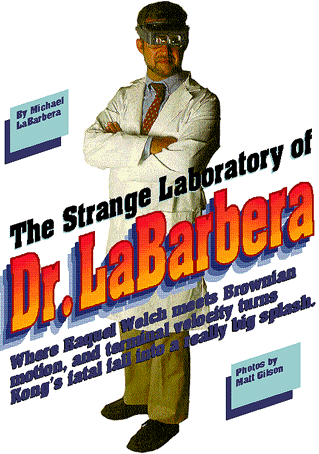
The University of Chicago Magazine
October-December 1996

Where Raquel Welch meets Brownian motion, and terminal velocity turns Kong's fatal fall into a really big splash.Where Raquel Welch meets Brownian motion, and terminal velocity turns Kong's fatal fall into a really big splash.
By Michael LaBarbera
Photos by Matt Gilson
Now you may find monster movies, as a genre, hard to reconcile with the normal decorum and rarefied intellectualism of academia. For me, though, they represent an educational resource for my introductory biology course, an eye-opening way of illustrating biological principles. They're also the source of a perverse delight--the delight of using basic biological knowledge to gain insights into the movies' plots and protagonists that often even the directors lacked. It's enough to make even B movies an A+ experience.
Continue reading "The Strange Laboratory of Dr. LaBarbera"
Go to:
- INVESTIGATIONS
- CHICAGO JOURNAL
- EVENTS
- LETTERS
- CHICAGOPHILE
- Feature story, "The Strange Laboratory of Dr. LaBarbera"
- Feature story, "Strength in Numbers"
- Special Report, "Building a Strong Cornerstone"
- Feature story, "The Wirszup Factor"
- CLASS NEWS
- DEATHS
- BOOKS BY ALUMNI
- IN THE CLUBS
Return to October-December 1996 Table of Contents